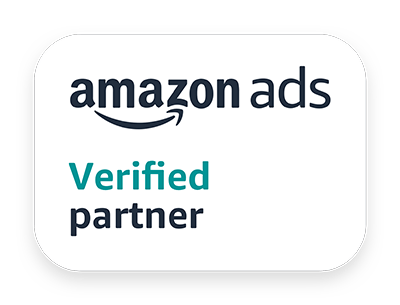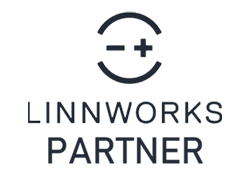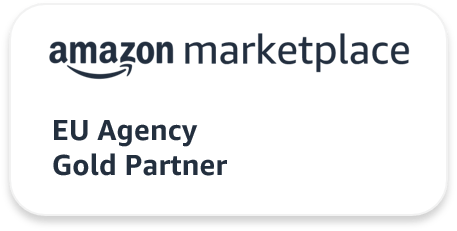How much do I need to start selling on Amazon?
So, you’ve decided to sell on Amazon? Excellent move! Amazon is the largest eCommerce marketplace in the world, with 9.7 million sellers worldwide and growing rapidly. Just two years ago, 3rd party seller services made $80.5M in collective sales, so you’re definitely in the right place if you have something interesting to offer and buyer needs to fulfil.
Selling on Amazon – How much it’s going to cost to start selling
To help you understand how the cost of selling on Amazon works, let’s break down our costs into four sections:
1. Amazon Seller Account fees
There are two kinds of Amazon seller accounts you can choose from – the fees and features of which are meant for specific selling needs – e.g. low-volume sellers vs. high-volume business sellers.
Individual (low volume) seller – This is ideal for individual sellers and occasional business sellers where there is $0 monthly fee to get started, while the listing fee is $0.99 per each item sold.
Professional (high volume) seller – This is meant for businesses and volume sellers where the monthly fee is $39.99, while there is no listing fee.
How to decide which account is ideal for you?
If you’re a well-established seller moving to Amazon, the Professional Seller account is the one you want to go with as the Individual Seller account has limited features and requires more ‘hands on’ management.
On the other hand, if you’re just starting out with online selling and using a platform like Amazon for the first time, the Individual Seller account is the way to go, as it has zero upfront costs – neither for registration nor for listing your products. In fact, you only pay once your products start selling, and that too is automatically deducted from your payout.
2. Amazon Sale-related fees
Once you start selling products on Amazon, three kinds of sale-related fees apply:
Referral fees – Amazon sellers, irrespective of the account they have, must pay a referral fee on every item sold on the marketplace. Product category and selling price are the main deciding factors for referral fee.
The calculation for referral fees is done as a percentage of your product’s selling price. Most sellers are currently paying around 15%, on average, although the fees can be anywhere between 6% and 45%, depending on the categories your products are in.
Minimum referral fees – Amazon also assigns a minimum referral fee to certain categories. So, if the category your product is in has a minimum referral fee, you’ll be paying the greater of the two fees, based on the selling price. If the referral fee is lower than the minimum referral fee, you are charged between $0 and $2.
Closing fees – Amazon charges sellers an extra fee for products falling under the media categories. This is called the closing fee and carries a flat $1.80 charge, which is then added to the referral fees for items you are selling in any of the media categories. This includes:
- Books
- DVD
- Music
- Software and computer/video games
- Video
- Video game consoles
3. Shipping Credits and Costs
These charges are not to be confused with seller fees, although you may end up paying Amazon if you don’t exercise caution.
So, if you decide to ship Amazon orders by yourself, Amazon will pay you a shipping credit per sale in order to balance out your shipping costs, but there is a catch: the credit Amazon pays out to sellers is mostly low in comparison with the shipping rates you end up paying to ship orders.
Therefore, depending on what kind of products you’re selling, along with the total weight and size of every package you ship, you may very well end up spending significantly more to ship orders than you actually receive via Amazon’s shipping credit.
In order to ensure that you do not lose all your revenues to shipping costs, you must work out how much you will receive from Amazon per each item sold. The Amazon shipping credit chart allows you to come up with an estimate for each product. You can use this to work out how much Amazon will offer for shipping out your products, which you can then compare with your actual shipping costs.
If you’re selling small and generally lightweight items, for example, you may come out ahead. If you’re shipping your products in large or heavy boxes, then you will likely lose on every sale.
There’s different kinds of shipping software which can help to lower your shipping costs notably and even boost your Amazon profit – an Amazon sales and marketing agency can provide further guidance in that regard.
4. FBA fees
Whether you are an Individual or Professional seller, you can use Fulfilment by Amazon to stock, pack and ship products to Amazon for delivery to your customers. It’s a very cost-effective solution, even though Amazon charges you for this, and the fee is quite reasonable for specific items. Furthermore, it takes the worry of packing and shipping tasks off your shoulders, as that alone can be very time-consuming; as an added bonus, you even become eligible for Prime.
Nearly all sellers are using FBA to fulfil some, if not all, of their orders, so it’s definitely worth considering. With that said, it’s important to note that FBA fees can vary according to product size and weight, so you must understand the total fees you’ll be paying to store and ship products through FBA before going ahead with it.
FBA fees comprises three main factors:
By service – FBA service fees include picking, packing and shipping costs, along with any boxes and packaging used (including those for returns). The two types of FBA services fees you’ll come across are monthly storage fees and pick, pack & weight handling fees.
By product size – FBA fees are also based on your product’s size which will be stored and shipped. This includes your product’s packaging, and is divided into two size categories: standard sized products (not exceeding 18” x 14” x 8” and under 20 lbs.) and oversized products (not exceeding 18” x 14” x 8” and over 20 lbs.).
By inventory storage – FBA will also charge inventory storage fees which go up significantly during the October-December holiday season. These storage rates apply on top of referral fees, fulfilment fees, and account fees. This Seller Central page has a detailed breakdown of the current FBA fulfilment fee rate changes introduced on May 12, 2022.
If you want to learn more about how much it will cost to start selling on Amazon according to your product(s) and your overall business goals, get in touch with Chris and his Amazon consultancy team now.




